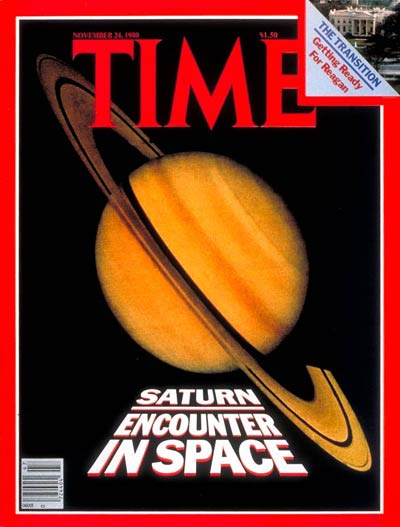
It was 35 years ago, on Nov. 12, 1980, that NASA’s Voyager 1 got as close to Saturn as it would in the course of its years-long mission. In the process, the probe—which had been launched about three years earlier—provided humankind with stunning image of the planet, as well as its rings and moons.
In all the centuries of staring out into space that had come before, sky-gazers had not been able to decipher many of the mysteries of the far-away planet. How many moons did the planet have? Not three, it turned out, but at least 15. And how many rings were there? Astronomers had long thought the answer was six, but suddenly it appeared that there were 1,000 of them, as TIME reported in a cover story the following week:
As more pictures came in, Saturn’s many-splendored rings began looking more and more like grooves in a celestial gold record. Even the Cassini division, a dark area first noticed three centuries ago and once thought to be the only gap in an otherwise solid surface, suddenly showed rings within it. At least two other rings were spotted slightly off center, like wobbly wheels on an old car, a curious and as yet inexplicable quirk. To complicate matters, near the outer edge of Saturn’s phonograph disc, the F-ring shows sinewy strands of material that look as if they had been twisted into braiding. Equally perplexing, spokes seem to form in some regions of the rings as the material whirls out from the planet’s shadow. Such aggregations of particles–apparently very tiny ones, judging from the way they reflect sunlight–should be quickly ripped apart, like a spoonful of sugar being stirred in a-cup of coffee. Yet somehow the spokes survive for hours at a time, almost as if they were intentionally setting out to destroy scientific theories about the rings. Says University of Arizona Astronomer Bradford Smith, chief of Voyager’s photo-interpretation team: “Those spokes are giving us nightmares!”
“We have learned more about the Saturn system in the past week,” one scientist noted at the time, “than in the entire span of recorded history.
Read the full Saturn cover story, here in the TIME Vault: Encounter in Space
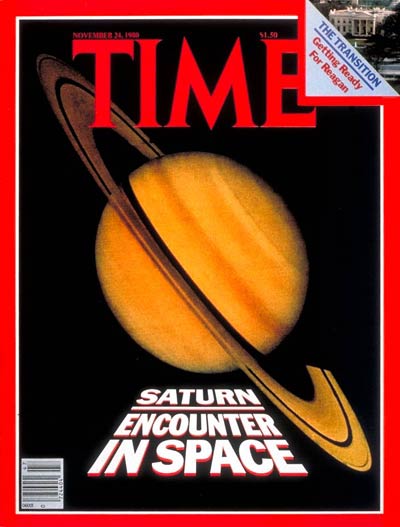

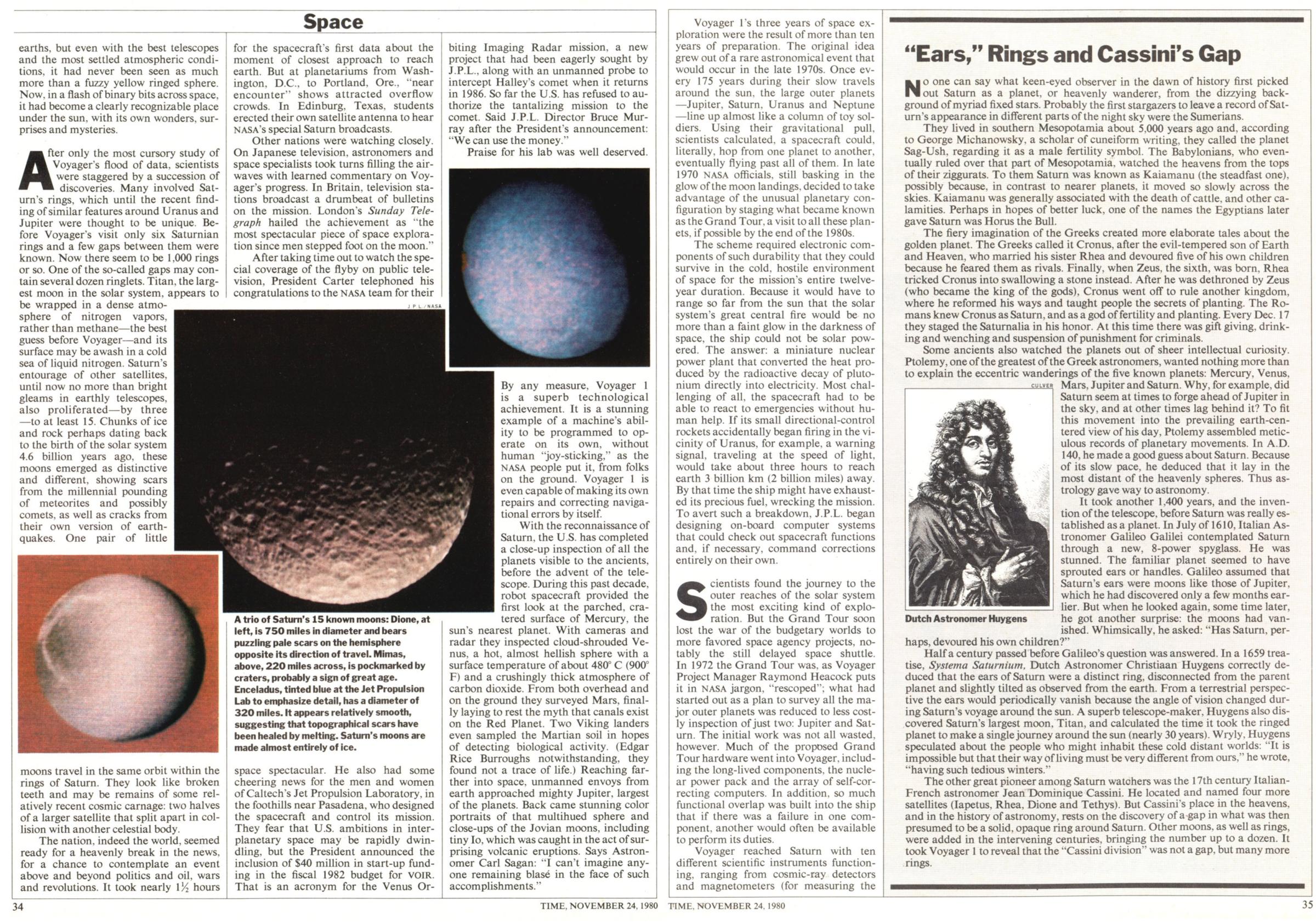
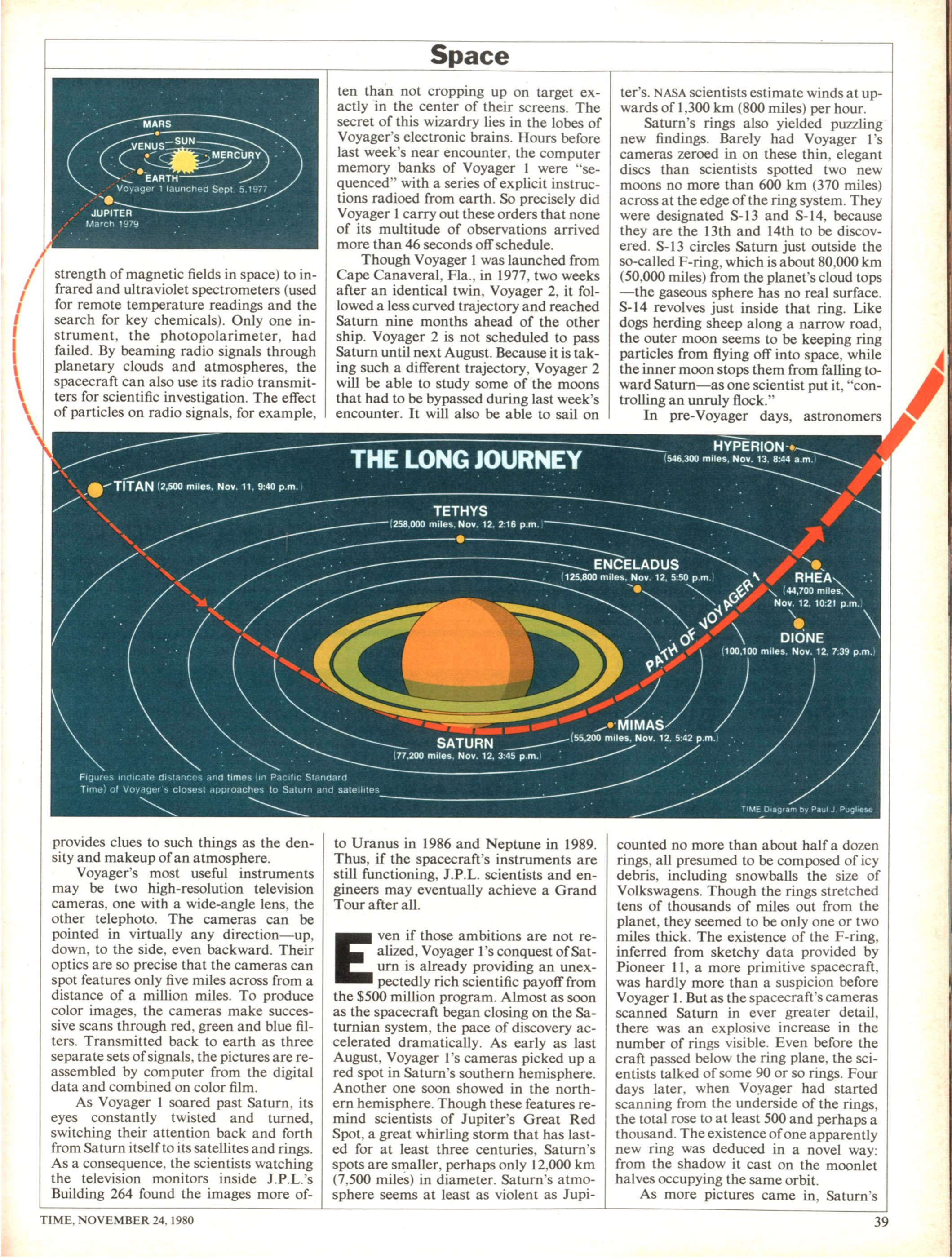
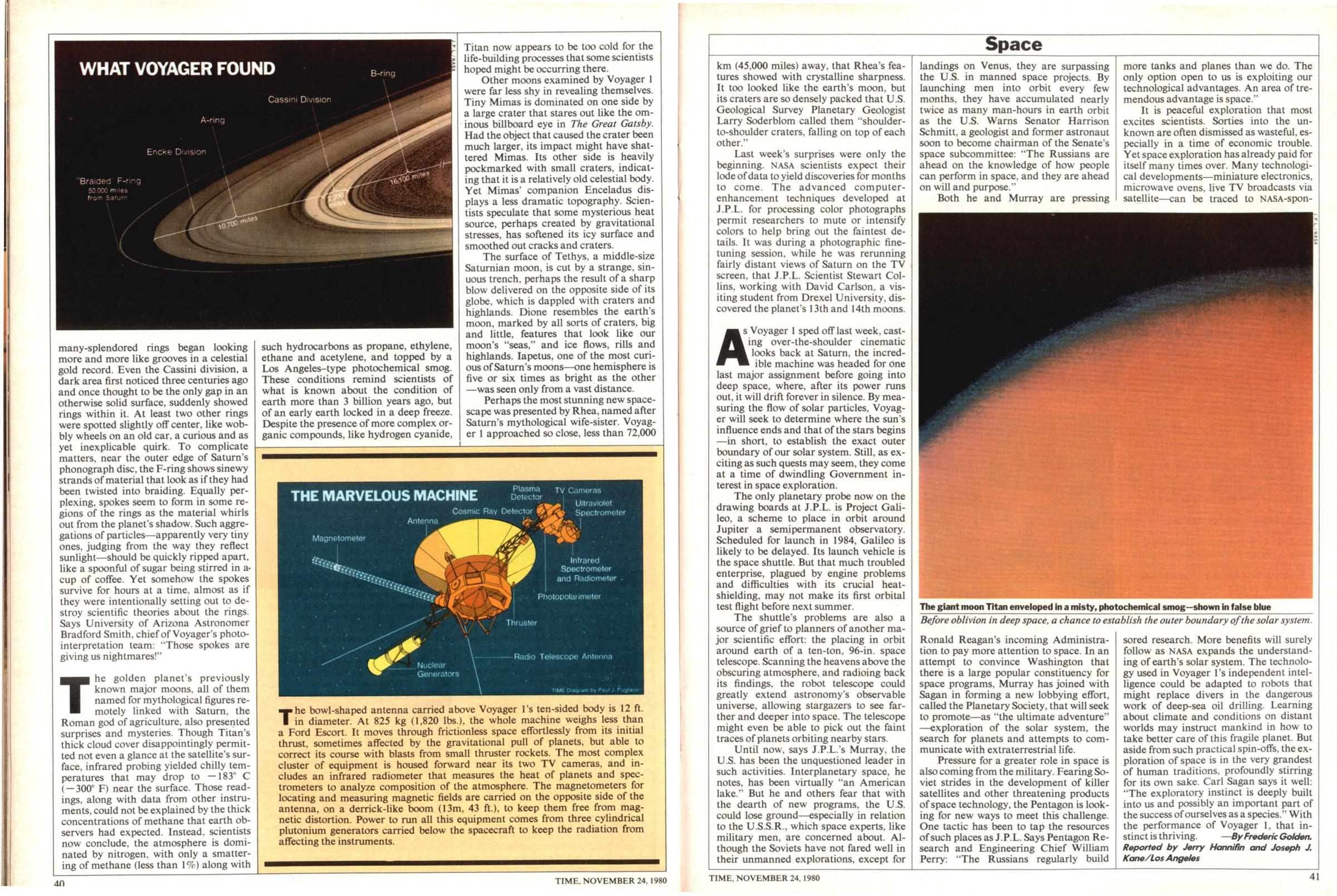
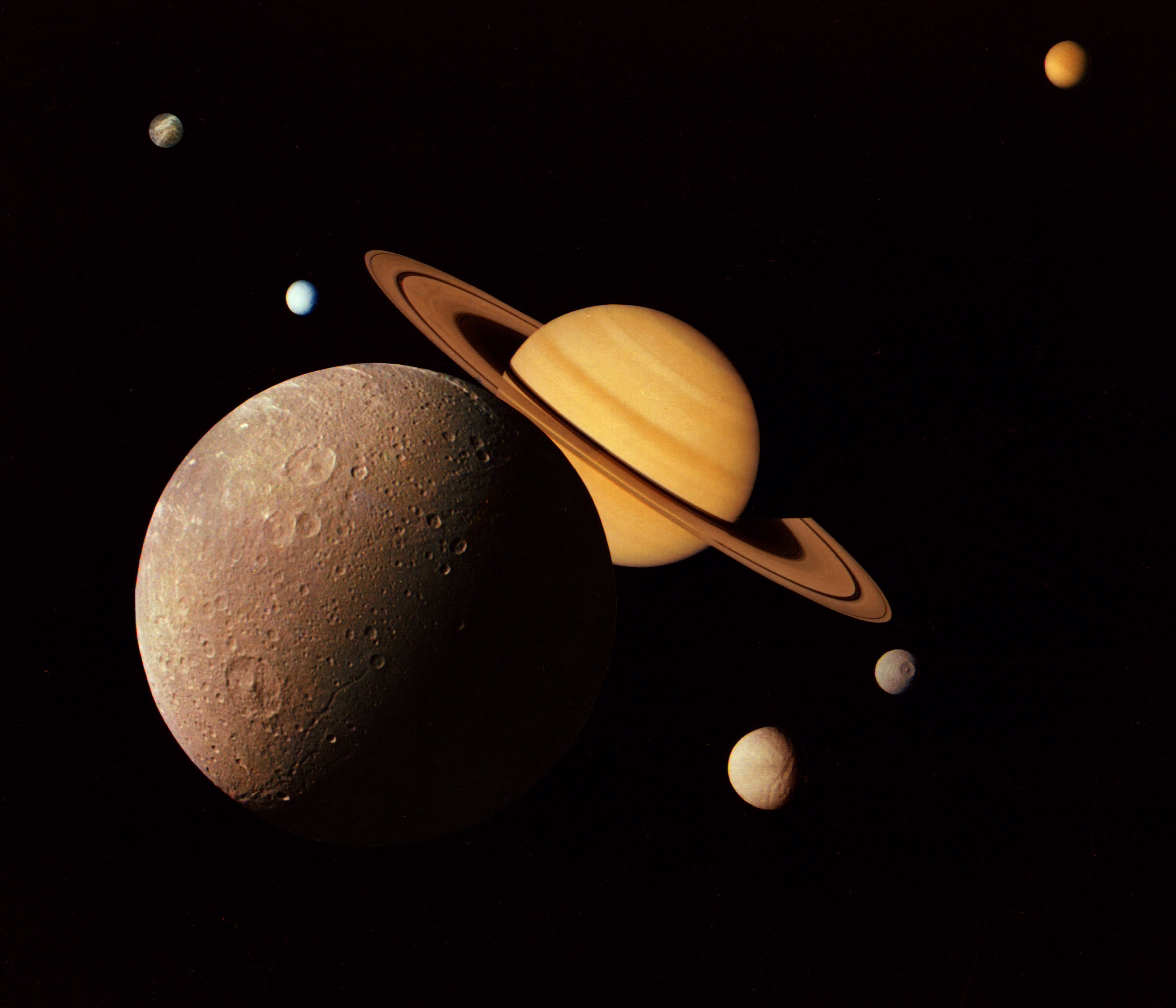
More Must-Reads from TIME
- Cybersecurity Experts Are Sounding the Alarm on DOGE
- Meet the 2025 Women of the Year
- The Harsh Truth About Disability Inclusion
- Why Do More Young Adults Have Cancer?
- Colman Domingo Leads With Radical Love
- How to Get Better at Doing Things Alone
- Michelle Zauner Stares Down the Darkness
Write to Lily Rothman at lily.rothman@time.com